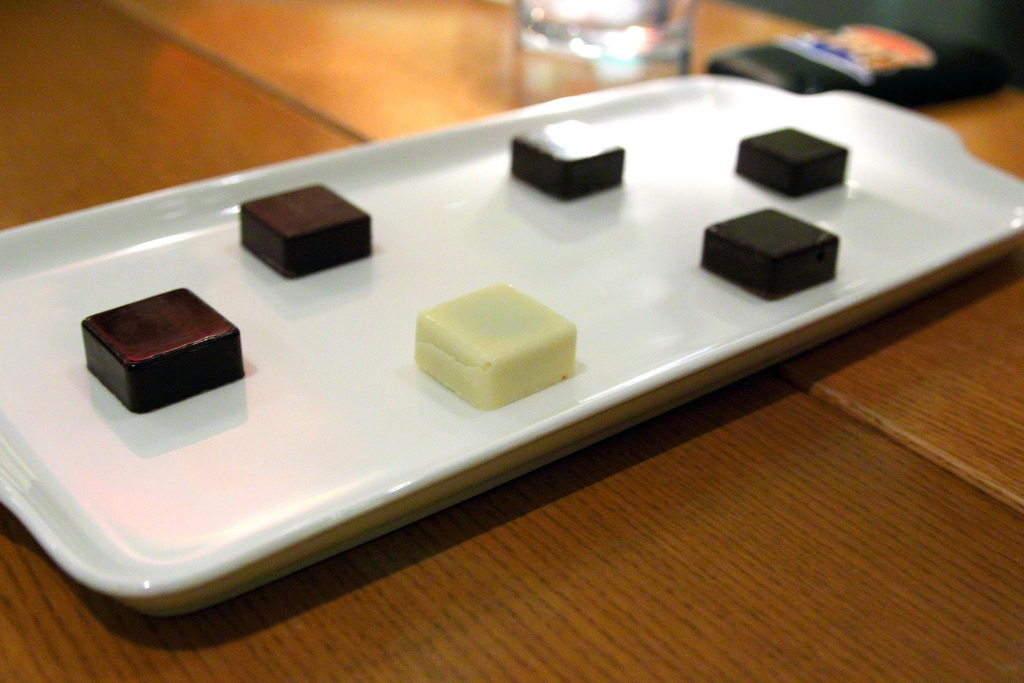
For seven years of my life, from sixth grade to 12th grade at primarily black and Latino schools in Las Vegas, I was the White Girl. In sixth grade, my classmates assumed I came from money and were shocked to learn that I, too, took the bus to school. In basketball, I was always forgiven for my terrible dribbling, and, when I sank a shot, I was seen as impressive. As the White Girl, I was taken under everyone’s wing. My friends never laughed at me for being behind on the newest slang, and they often volunteered definitions for words I didn’t yet know—“Not-White Girl Words,” as we called them. I grew to love Tapatio and grits. I came to understand the mysterious combination of chicken and waffles. (It’s not that they go great together; it’s that they’re both delicious and, if both are on your plate, you don’t need to choose.)
In my high school, everyone was aware of race, but no one was afraid of it. We joked about it constantly. When I didn’t know a pop culture reference, my friends laughed and said it was because I was a white girl who never watched BET. When there was a dance circle, I wasn’t expected to join it—white girls can’t dance. We all told Hector, a Catholic Mexican, that we knew he had to have at least 10 siblings. If my half-black friend Carl rolled up in a shiny new car, we all joked that he must have jacked it. With our discussions and jokes, we played with stereotypes and made them non-scary. We joked around so much that school administrators even planned an assembly for my class to talk about our inappropriate jokes and discussions, but when they looked more closely and saw how comfortable we were with one another, they cancelled the event.
In 2010, I moved to Los Angeles and to college. My campus was (and is) diverse, but it included a lot of white girls—like me. So what had made me stand out now made me blend in. I was no longer the White Girl. Sometimes, frankly, I didn’t even feel especially white. A lot of my fellow white girls were doing yoga and wearing designer jeans. I wasn’t. I was used to people caring more about their shoes than the rest of their outfit. If you were wearing cool kicks, you looked good. That wasn’t true in college. I’d brought my cherished pair of Nikes to L.A., but no one cared.
My college, Occidental, is progressive. It prides itself on ethnic and cultural diversity. I’m proud to be a student here. But gone is the relaxed spirit of high school, where race was a fact of life but not a scary one. When I joked to a black college friend that he was whiter than me—I made this observation because he wears boat shoes—the people nearby looked at me in shock and dismay. Some things are Not Said. Diversity now feels theoretical and academic. There is a class here about “whiteness.”
During my freshman year, when I was feeling out of place, I often video chatted with my friends from high school. We laughed about how everyone in college looked like me. My old friends were shocked to hear that no one at my college said “finna” (meaning “going to” or “about to”) or “chop it up” (meaning “hit on”). They shook their heads when I told them people were confused when I said “yo” and “y’all” in the same sentence. They were appalled that guys don’t wear different shoes every day and that the colors on their shoes and shirts don’t match. They rolled their eyes when I said that the girls wear summer dresses. I told them people here don’t talk about their ethnicity. “I can’t tell jokes anymore,” I nearly cried.
Luckily, with some friends, there’s still room for letting your hair down. Leslie, my roommate and close friend at college, is ethnically French and Jamaican. We joke around. She doesn’t know what “finna” means. She has never had chicken and waffles and still doesn’t believe they’re a magical combination. She grew up in New York with three rabbis as neighbors. I call her Woody Allen; she calls me Eminem.
When I was writing this article, I got back in touch with my high school friends to ask them what they would call themselves in terms of race. Asking them to be precise felt distant and unfamiliar, because we’d never been so self-conscious in high school. But they told me, so I can report that Tatiana is black and Spanish, Hannibal is Ethiopian, Edwin is Filipino, Karl is Togolese, Carl is a “swirlbaby” (half-black, half-white), and Sheila is Native American. I’ve come to realize that “post-racial” doesn’t mean “race-blind.” It means “race-unscary.” High school, for all our stereotyping and joking, was a lot more post-racial than college.
Recently, I was driving around with a college friend when we ran out of gas. She’s a Filipina who has bonded with me over our shared love of rap, and, as we tried to coast in our dead car to the gas station, we joked about being “too hood” for this school. Of course, the idea of me being “hood” at all makes my friends from high school double over in laughter. But the White Girl in high school has become the gangster at a liberal arts college. I just wish more of my new friends could laugh about it.




Send A Letter To the Editors